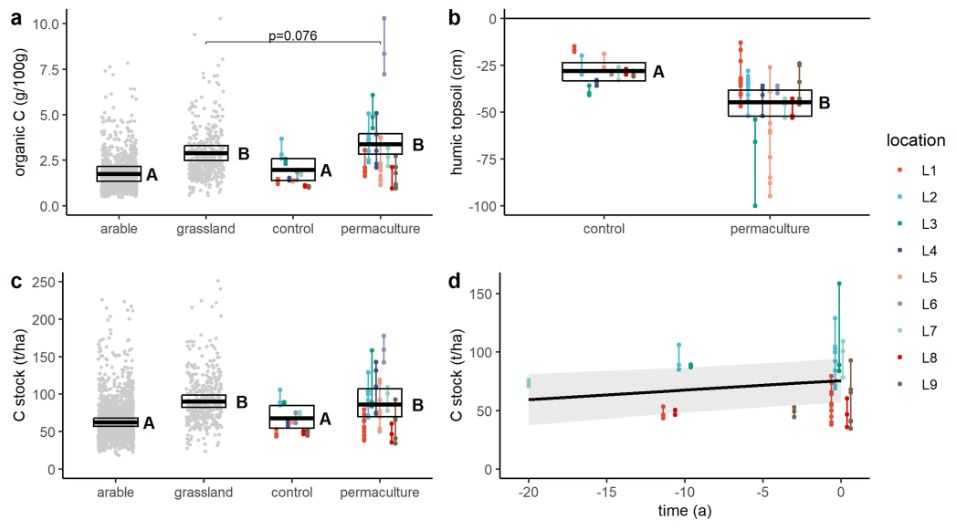July 4, 2024 | Communications Earth & Environment | Source |
Introduction: Permaculture is increasingly seen as a promising tool to address environmental challenges like soil degradation, climate change, and biodiversity loss. An European research team led by researchers based in Institute for Environmental Science in Germany assessed soil and biodiversity indicators across nine permaculture farms in Central Europe, comparing them with nearby conventional agricultural fields.
Key findings: The results showed that permaculture sites had 27% higher soil carbon stocks, 20% lower soil bulk density, and 201% more earthworms. Nutrient concentrations were also higher, indicating better soil conditions for crop production. Biodiversity was significantly greater on permaculture sites, with 457% more plant species, 77% more earthworm species, and 197% more bird species compared to conventional fields.
These findings suggest that permaculture can significantly enhance soil quality and biodiversity, making it a viable strategy for sustainable agriculture. The higher carbon stocks and nutrient levels on permaculture sites highlight its potential for carbon sequestration and soil fertility improvement, while increased biodiversity supports ecosystem services like pollination and pest control. The study underscores the potential of permaculture to redesign farming systems for environmental sustainability, but also notes that further research is needed to fully understand its long-term impacts.
Figure | Soil organic carbon. a Topsoil (30 cm) organic carbon content on nine permaculture sites, direct control fields of locally predominant agriculture and German grassland (n = 387) and arable land (n = 1683)36. b Humic topsoil depth on nine permaculture sites and direct control fields of locally predominant agriculture. c Topsoil (30 cm) organic carbon stock on nine permaculture sites, direct control fields of locally predominant agriculture and German grassland (n = 387) and arable land (n = 1683)36. d Roughly estimated topsoil (30 cm) carbon sequestration (p = 0.044, χ2 = 5.05, df = 52) on six permaculture sites under the assumption that carbon level was originally sufficiently equal on site pairs and did not change on control fields. To set today as a baseline, the age of the permaculture sites was set to zero, and the age of the paired control sites was set to the negative age of the corresponding permaculture site. Here, the black line indicates a significant linear regression slope and 95% confidence interval. Dots indicate individual data points. Colors indicate sampling pair locations and gray dots indicate data points of literature data. Crossbars indicate the model-predicted mean and 95% confidence interval. Treatments not sharing the same letters are significantly different.




